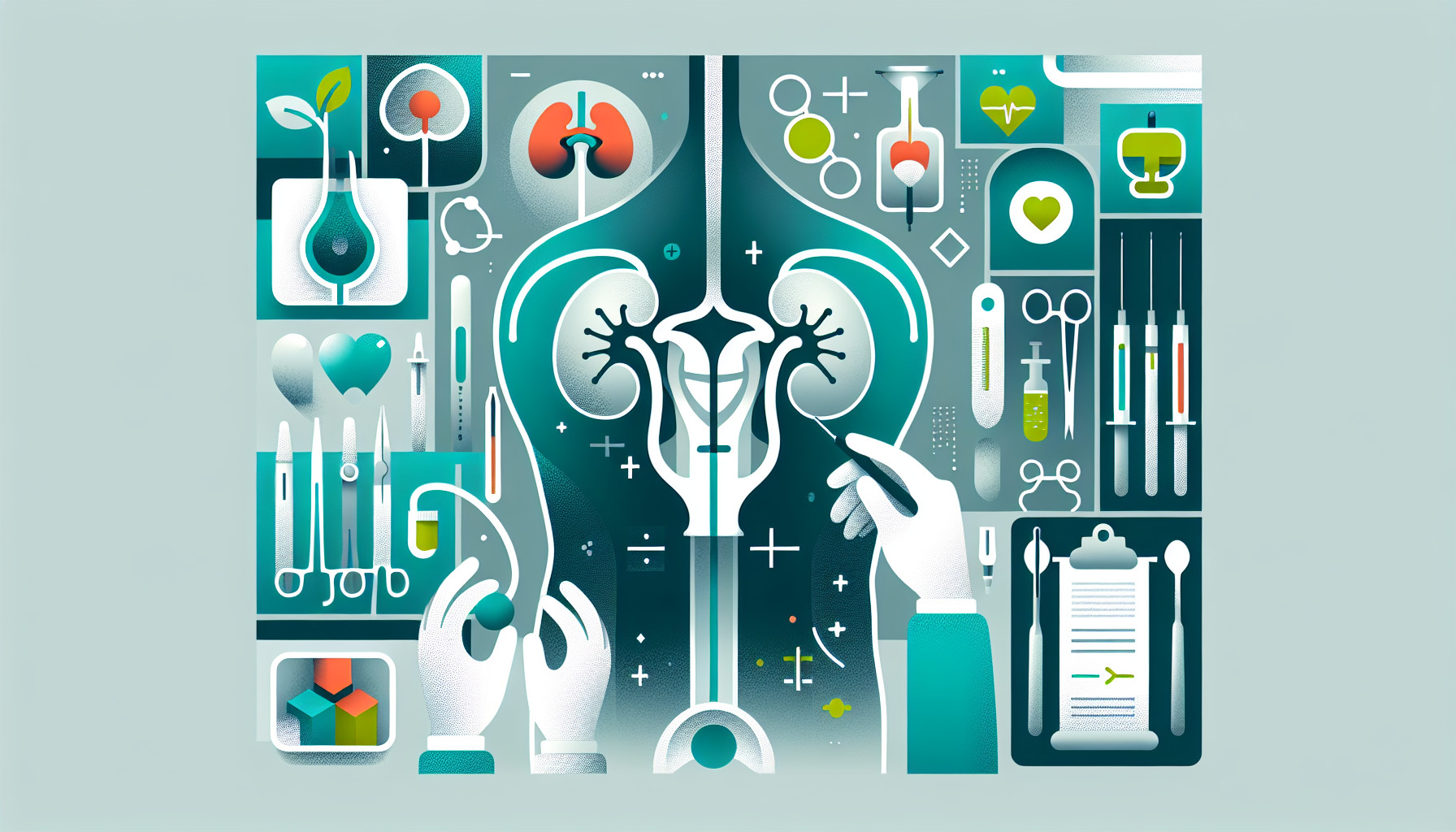Our Summary
This research paper focuses on a condition called CAKUT, which is a common cause of severe kidney failure in children. This condition often involves poor urine drainage, which can make kidney transplants less successful. The researchers are trying to find the best ways to manage these issues and improve the chances of a successful transplant.
In this study, they focused on a procedure called ureterostomy, which is a type of surgery that helps with urine drainage. They examined six children who had a ureterostomy at the same time as their kidney transplant at a children’s hospital in Dublin, Ireland. They compared these children’s kidney function and rates of urinary tract infection to other children who had different procedures or who had normal bladders.
They followed up with the children for five years after their surgeries. They found that the children who had a ureterostomy had similar kidney function and rates of urinary tract infection to the other groups. This suggests that ureterostomy is a safe and effective option for improving urine drainage in children with this condition.
However, they stress that it’s important to consider the risks and implications of this procedure, especially if it’s being done as a permanent solution after a kidney transplant.
FAQs
- What is CAKUT and how does it affect kidney transplants in children?
- What is a ureterostomy and how can it help children with poor urine drainage?
- Based on the study, what are the long-term effects of a ureterostomy on kidney function and urinary tract infection rates?
Doctor’s Tip
One helpful tip a doctor might tell a patient about ureterostomy is to make sure to properly care for the stoma and surrounding skin to prevent infections and complications. This includes keeping the area clean and dry, changing the stoma bag regularly, and following any specific instructions provided by the healthcare team. It’s also important to monitor for any signs of infection or other issues and to seek medical attention if any concerns arise. Additionally, staying in communication with the healthcare team and attending follow-up appointments is crucial for ongoing care and monitoring of the ureterostomy.
Suitable For
Patients who are typically recommended ureterostomy are those with CAKUT (Congenital Anomalies of the Kidney and Urinary Tract) or other conditions that result in poor urine drainage and recurrent urinary tract infections. These patients may have failed previous surgical interventions or have a high risk for complications with other forms of treatment. In some cases, ureterostomy may be done as a temporary measure to improve urine drainage before a kidney transplant, or as a permanent solution to manage ongoing issues with urine flow. It is important for healthcare providers to carefully assess each patient’s individual circumstances and consider the potential risks and benefits of ureterostomy before recommending this procedure.
Timeline
Before ureterostomy:
- Patient is diagnosed with CAKUT, a condition that causes poor urine drainage and can lead to severe kidney failure
- Patient undergoes various tests and evaluations to determine the best course of treatment
- Surgical team discusses the option of ureterostomy as a way to improve urine drainage
- Patient and their family weigh the risks and benefits of the procedure and decide to proceed with ureterostomy
After ureterostomy:
- Patient undergoes ureterostomy surgery at the same time as their kidney transplant
- Post-surgery, the patient is monitored closely for any complications or issues
- Over the next five years, the patient is followed up with to monitor kidney function and rates of urinary tract infection
- Researchers compare the outcomes of patients who had a ureterostomy with those who had different procedures or normal bladders
- Results show that ureterostomy is a safe and effective option for improving urine drainage in children with CAKUT, with similar kidney function and rates of urinary tract infection compared to other groups
Overall, the timeline for a patient before and after ureterostomy involves careful consideration of the procedure, close monitoring post-surgery, and long-term follow-up to assess the effectiveness of the treatment.
What to Ask Your Doctor
- What is ureterostomy and how does it work to improve urine drainage?
- What are the potential risks and complications associated with ureterostomy?
- How will having a ureterostomy affect my daily life and activities?
- Are there any long-term effects or considerations I should be aware of with a ureterostomy?
- Will I need any additional follow-up care or monitoring after having a ureterostomy?
- Are there any alternative treatment options to consider before proceeding with a ureterostomy?
- How successful is ureterostomy in improving kidney function and reducing urinary tract infections in children with CAKUT?
- What is the recovery process like after undergoing a ureterostomy procedure?
- How experienced is the medical team at performing ureterostomy procedures, and what is their success rate?
- Are there any lifestyle changes or adjustments I should make after having a ureterostomy?
Reference
Authors: Costigan CS, Raftery T, Riordan M, Stack M, Dolan NM, Sweeney C, Waldron M, Kinlough M, Flynn J, Bates M, Little DM, Awan A. Journal: Pediatr Transplant. 2021 May;25(3):e13919. doi: 10.1111/petr.13919. Epub 2020 Nov 20. PMID: 33217168
